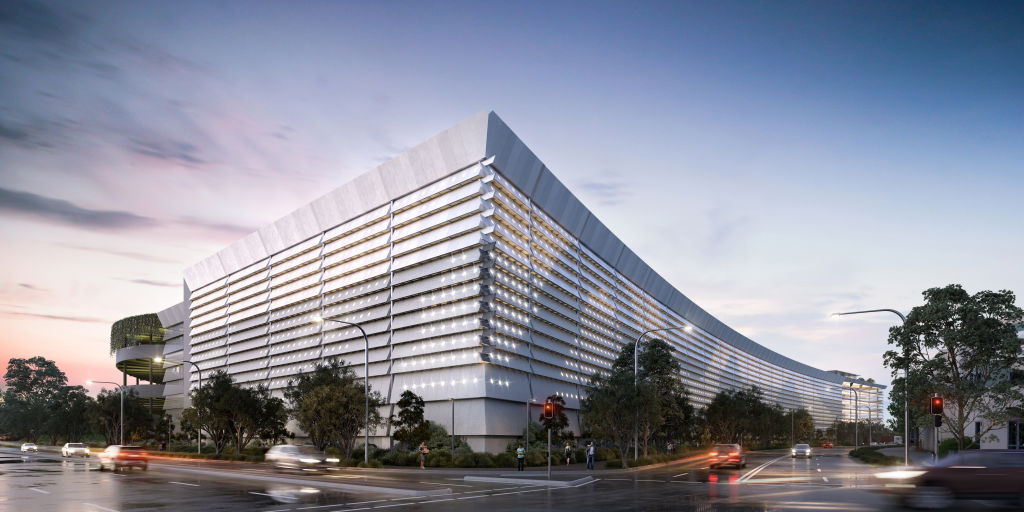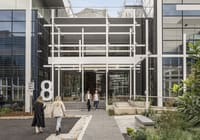
Raising the standards
Once, industrial units were concrete and tin sheds with a couple of roller doors. Today, they’re buildings costing up to $500 million to construct, says Richard Stacker, who leads Charter Hall’s industrial and logistics business, and then fitted out with up to $300 million of automation technology.
“They’re now bigger, more complex and far more expensive than ever before,” he says. “They’re part of the push for greater productivity that’s coming from a change in consumer habits with more people buying online.
“Goods have to come in quickly and then get out to the consumer in an ever-shortening timeframe, which demands more complex technology. At the same time, there’s a real commitment to environmental goals, like better energy usage. We have $20 billion in industrial assets, and 70 per cent have smart energy.”
So, the aim now with industrial buildings and their processes is to make them operate faster, more responsively and more efficiently, and with a reduced carbon footprint. For that reason, every new building Charter Hall develops or acquires has solar installed on the roof. In the past few years, they’ve increased that to 21 megawatts, which is enough to power 5000 homes – and has an increasing degree of automation.
That automation enables factories and warehouses to work more safely as well as speedily, advises Gavin Bishop, managing director of industrial of Colliers, especially in picking and packing and distribution.
“There have been major improvements in technology as a result of all the investment in it,” Bishop says. “It’s enabling companies to keep up with the growth of the sector. It’s definitely becoming more of a focus from the occupier, too, and so it continues to evolve.”
With increasing technology sophistication comes the ability to operate even more effectively in bigger and taller warehouses. Where land is at a premium, multistorey facilities make sense, especially with the automation to make them workable.
“We’ve currently got four or five developments that are slated for multilevel industry at various stages,” said Brendon Quinn, general manager of NSW industrial developments for Goodman Group. “We don’t want to be too forward with it, but it’s definitely the next step for South Sydney in particular. There are other areas that reposition assets on a single level.”
Real estate investment trust, Dexus, is also making far more use of automation and robotics in their warehouses, especially when they have higher roofs. The company has been raising roofs to 14.6 metres with 16.8-metre ridge heights, making them taller than the usual 12.2 metres to 13.7 metres, to accommodate more palettes and add racking.
“We’re building taller facilities as standard now,” said Chris Mackenzie, head of industrial developments and transactions at Dexus. “And we have new fire systems that deal with that extra volume. When we outgrow a facility, we’re building taller facilities from the get-go.”
There’s also the development of “dark store” facilities, whether e-commerce warehouses, distribution centres or micro-fulfilment hubs, which don’t need much lighting since they’re pretty well fully automated, with few staff in the buildings. “The labour is often off-site and only comes on-site for maintenance,” says Mackenzie.
Along with that increasing automation is the improved environmental efficiency of industrial buildings. Recently, the City of Sydney decreed that all development applications for office, retail and hospitality projects would need to have energy efficiency and renewable energy targets in order to be given the go-ahead. It’s not inconceivable that those features will soon become compulsory to win industrial approvals, too.
“If councils or governments want that, that’s a good thing,” says Bishop. “That’s the way of the future. Global capital also wants to invest in real estate that’s working towards that net zero position, so a building’s green credentials are becoming a major consideration for domestic super funds and global investors.
“There’s a real push for environmentally friendly buildings that’s being driven by capital. The major investors are saying buildings have to have an ESG (Environmental, Social and Governance) rating moving forward, especially if they want to retain and attract good tenants.”
Since COVID-19, more and more customers are focussed on reducing their emissions in the industrial space, believes Stacker. With energy costs a significant, and rising, part of budgets, it’s also in their interests to analyse energy use in order to cut it back, he says.
Stacker has also been surprised by how many industrial users are now taking up electric vehicles, with precincts, as a result, having to be fitted with EV-charging stations. “You think about bikes and vans that are used to deliver parcels and that can be a pretty big footprint,” he said.










